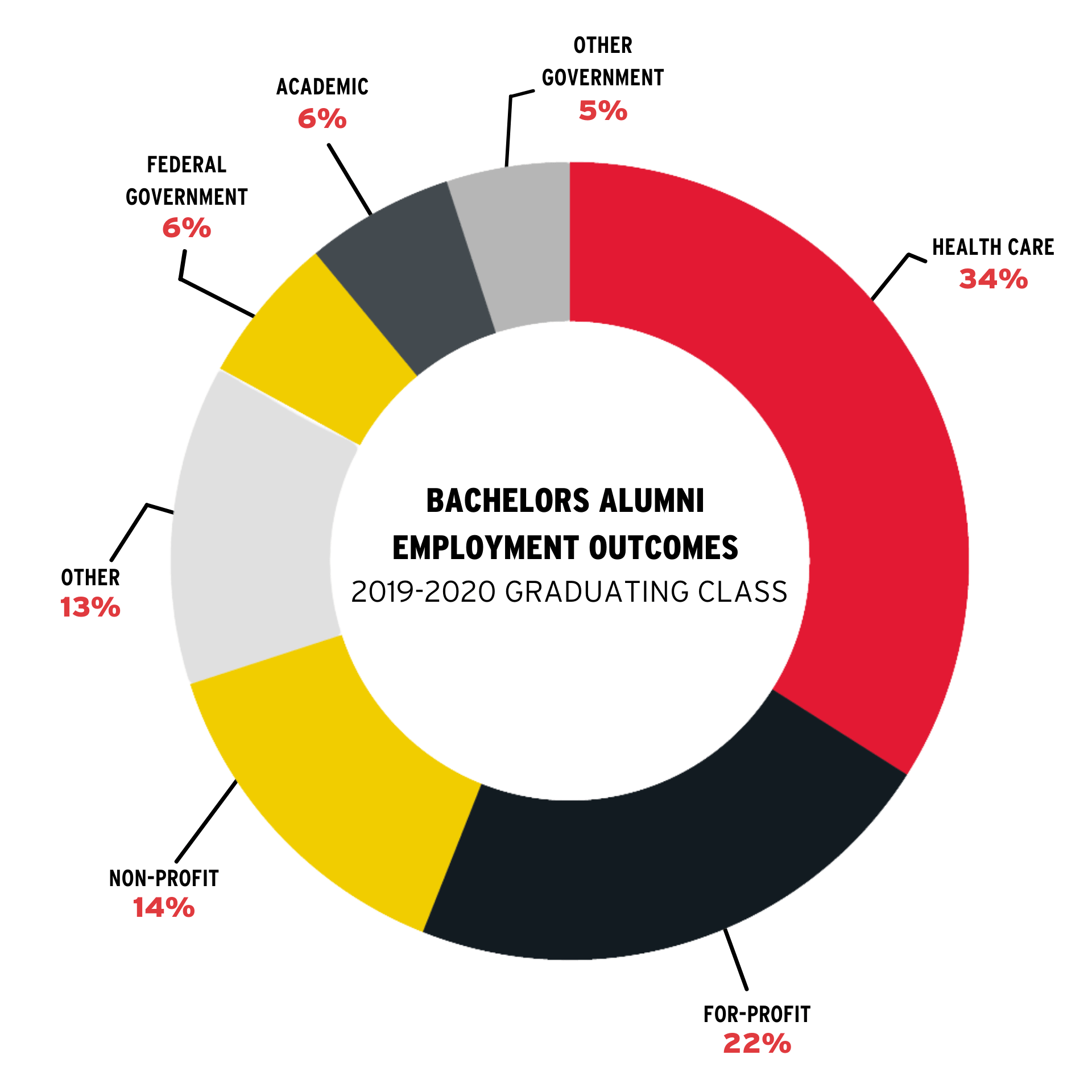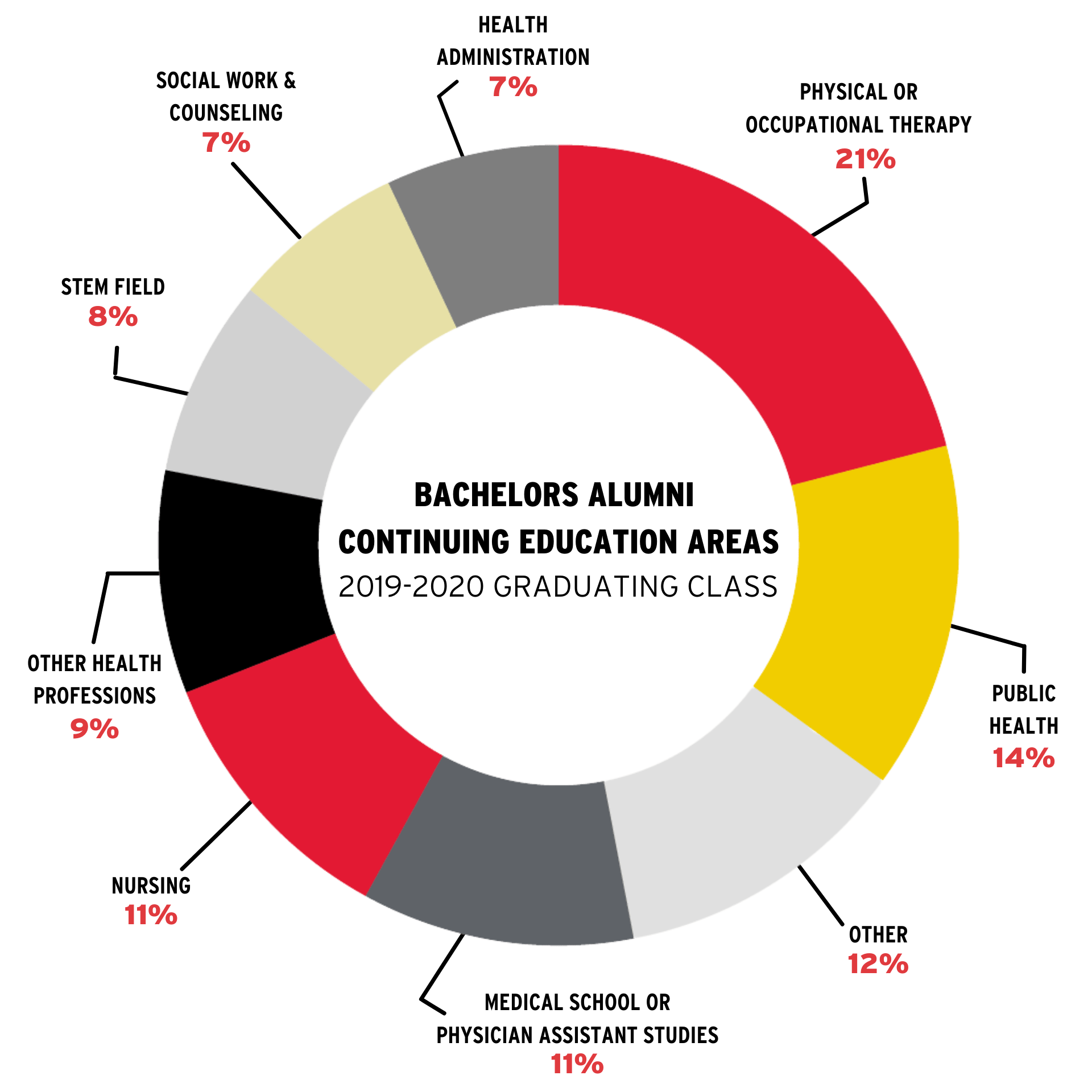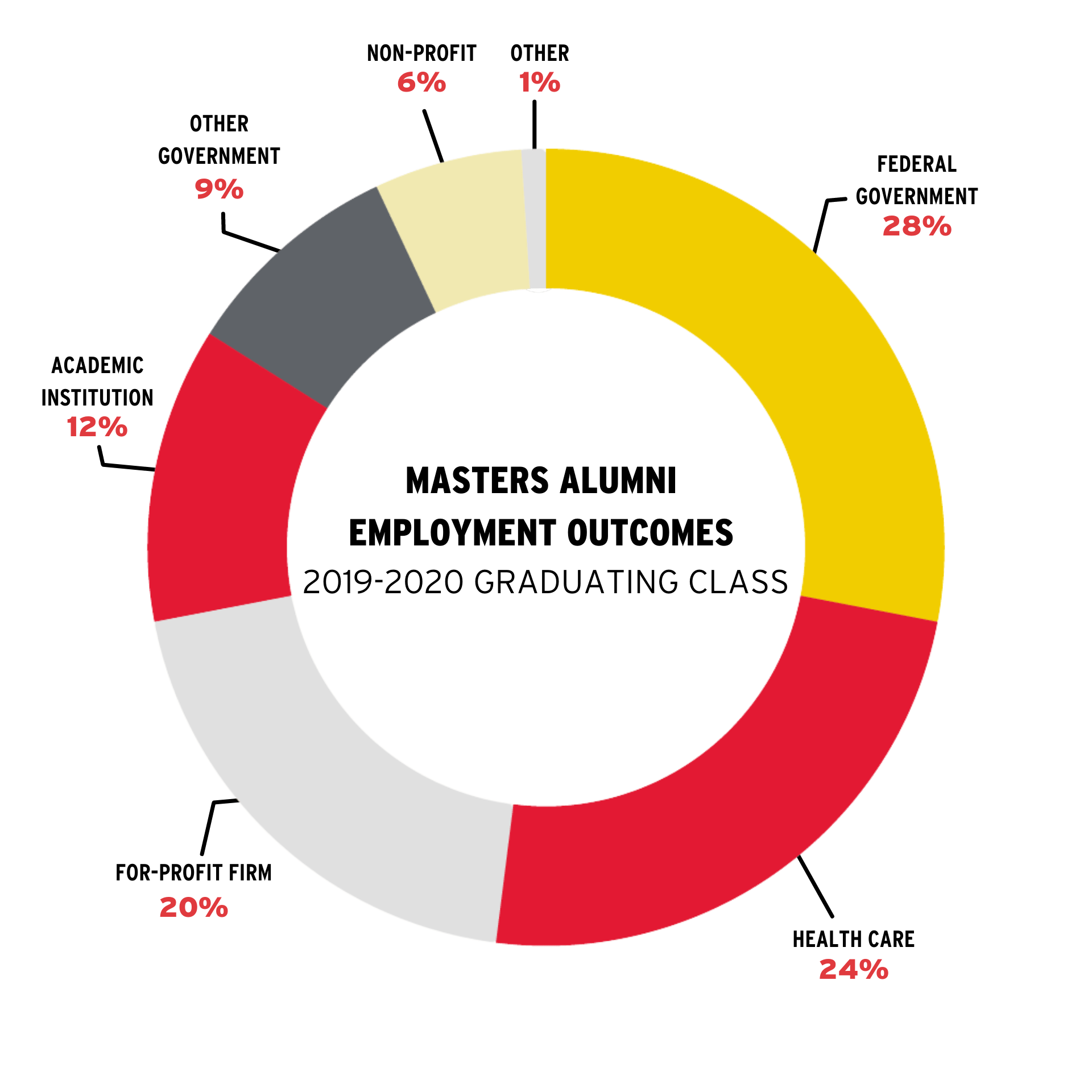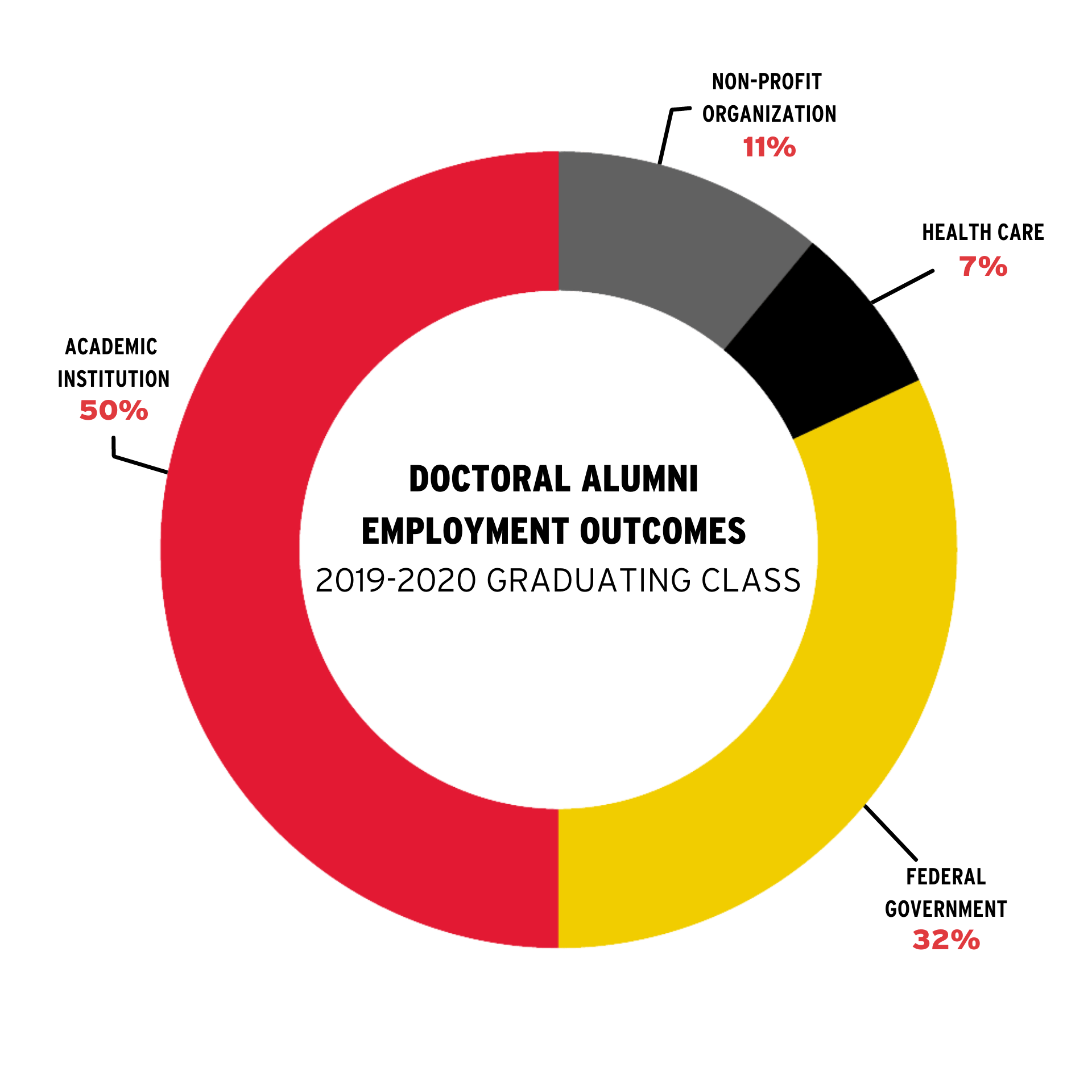Graduates from the University of Maryland School of Public Health go on to thriving careers or choose to continue their education in various fields related to public health—from academia to health administration to physical therapy. Wherever they go, they bring their global perspectives, real-world public health experiences and critical thinking skills developed at the School of Public Health.
2019-2020 Graduate Outcomes
Bachelors Graduates Employment Data

Employment sectors for the 2019-2020 bachelors graduating class:
- 34% health care
- 22% for-profit
- 14% non-profit
- 13% other
- 6% academic
- 6% federal government
- 5% other government
At approximately one year following graduation, 97% of undergraduate alumni were either employed or pursuing further education. The most common employment sector was health care.

Continuing education areas for the 2019-2020 bachelors graduating class:
- 21% physical or occupational therapy
- 14% public health
- 12% other
- 11% medical school or physician assistant studies
- 11% nursing
- 9% other health professions
- 8% STEM field
- 7% health administration
- 7% social work and counseling
Master's Degree Graduates

Eighty-nine percent of 2019-2020 master's graduates were employed and six percent were pursuing further education, half of whom chose further study in public health. The most common employment sectors were the federal government and health care.
Employment sectors for the 2019-2020 masters graduating class:
- 28% federal government
- 24% health care
- 20% for-profit firm
- 12% academic institution
- 9% other government
- 6% non-profit, 1% other
Doctoral Graduates

Employment sectors for the2019-2020 doctoral graduating class:
- 50% academic institution
- 32% federal government
- 11% non-profit organizations
- 7% health care
Student Experiences of the 2019-2020 Graduating Class
Bachelors Graduates
Ninety-four percent of undergraduate alumni said the skills they learned from their SPH courses will be meaningful for their future employment.
During their time as a student:
- 50% gained experience in research
- 56% participated in or led a service activity
- 64% attended a professional development activity hosted by SPH (e.g., career seminar)
- 23% participated in professional service activity (e.g., service as a committee member for a professional organization)
Eighty-seven percent of undergraduate alumni agreed that their education in SPH increased their knowledge of diversity issues.
Eighty-nine percent of undergraduate alumni agreed that their education in SPH prepared them to work with others whose backgrounds and cultures are different from their own.
Master's Degree Graduates
Ninety percent of master's alumni said the skills they learned from their SPH courses will be meaningful for their future employment.
During their time as a student:
- 47% gained experience in research
- 23% participated in or led a service activity
- 65% attended a professional development activity hosted by SPH (e.g., career seminar)
- 23% participated in professional service activity (e.g., service as a committee member for a professional organization)
- 20% worked as a teaching assistant
Doctoral Graduates
Eighty-nine percent of doctoral alumni said the skills they learned from their SPH courses will be meaningful for their future employment.
During their time as a student:
- 44% participated in or led a service activity
- 44% attended a professional development activity hosted by SPH (e.g., career seminar)
- 89% participated in professional service activity (e.g., service as a committee member for a professional organization)
- 67% worked as a teaching assistant